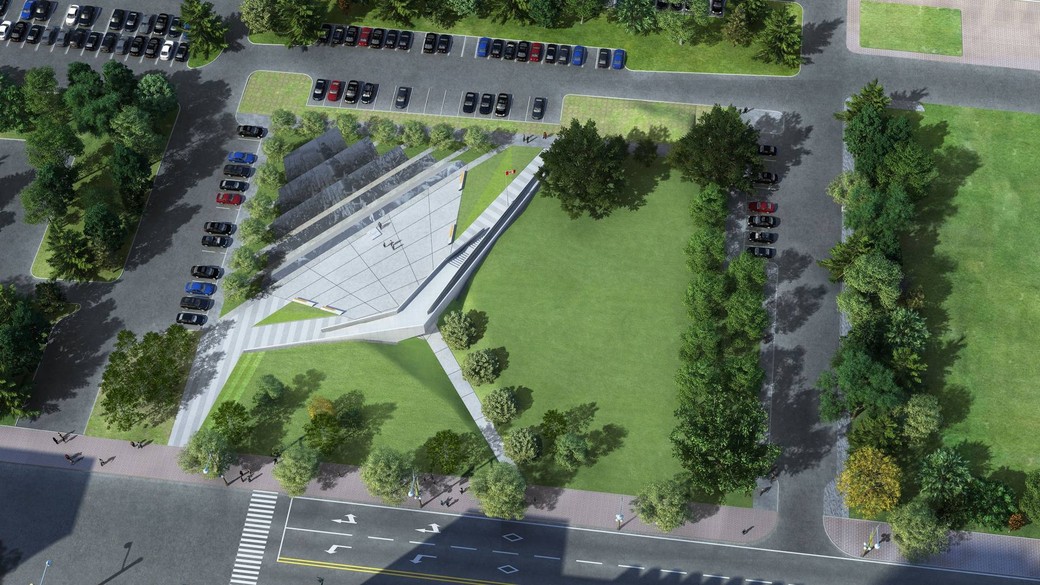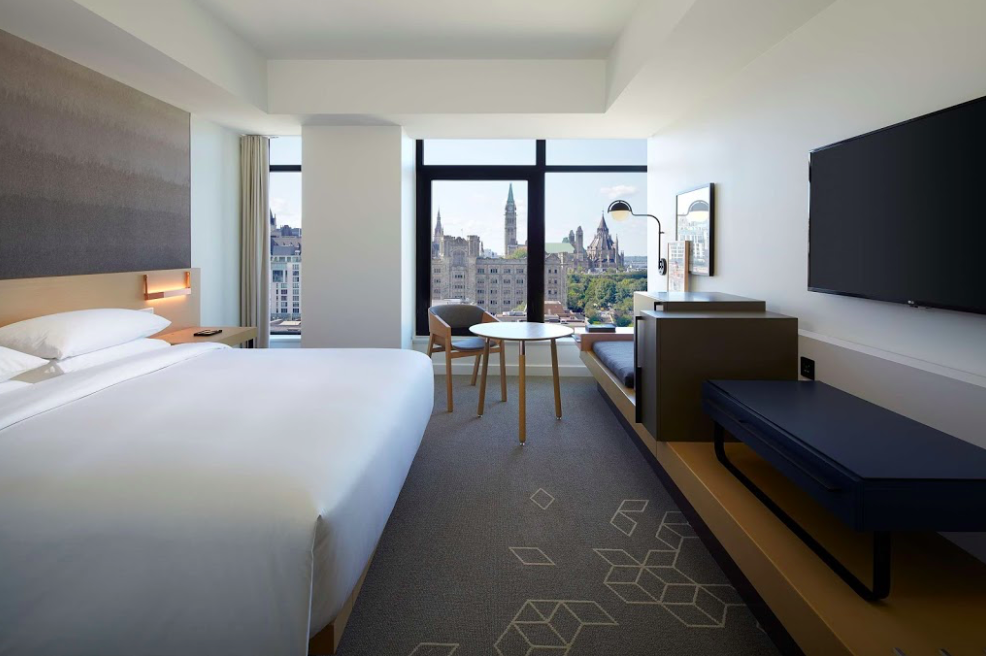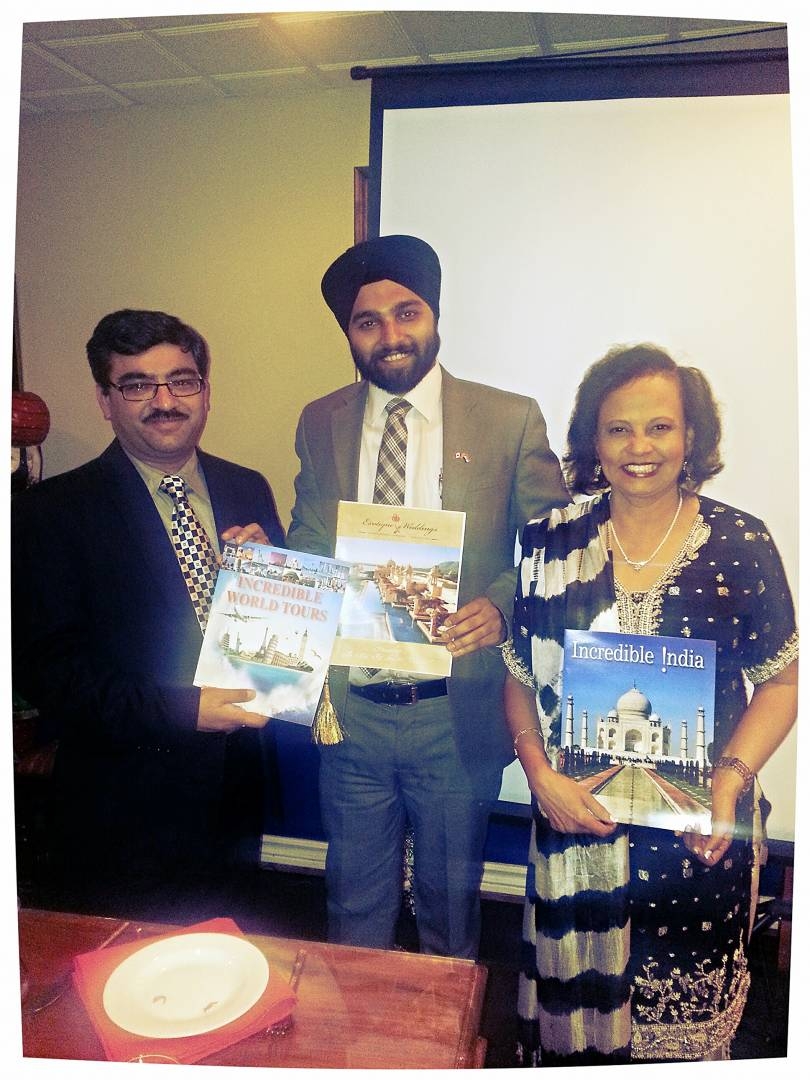
The Memorial to the Victims of Communism: It’s Complicated
There seems to be a general agreement that the Memorial to the Victims of Communism—Canada a Land of Refuge is a worthy project. However, controversy surrounds the current proposed location and design.
Canada, a Land of Refuge— More than a Memorial
“People are trying to make this political,” says Ludwik Klimkowski about the plans to build a memorial to the victims of communism. Klimkowski is the board chair for Tribute to Liberty, a Canadian charitable organization, established with the mission of creating a monument for the millions of people who struggled under communist regimes and for those who helped them find refuge.
“I wish they paid more attention to the eight million of us who live here who are either directly or indirectly touched by the evils of communism,” he says.
Milo Suchma is one of those eight million.
Early one September morning in 1951, six secret policemen came to the Suchma family apartment in Prague, Czech Republic (formerly known as Czechoslovakia). “They took my father immediately out. They took my mother for interrogation for some time and they were with me in the apartment,” remembers Suchma.
“After two days, they let me go to school and I went to my class teacher, not loudly, but I told her, apologizing that I missed two days of school but my father was arrested,” he says. The teacher was a Russian émigrée. Her husband was taken away after the war and she never saw him again. “She told me, ‘Be very brave.’”
Suchma had just started the fifth grade. His father, Miloslav Suchma, a jeweler, was arrested and all his possessions taken away.
“The communists took everything,” Suchma recalls. “They put him in prison for two and a half years and he was lucky…because some of his colleagues got seven or 12 years in prison .”
“After that, you are nobody. You are nobody.You cannot get a reasonable job,” he describes.
“This is even a relatively mild story,” Suchma warns.“Some people can tell you stories that their whole family was wiped out—executed.”
Suchma left Czechoslovakia in August 1968. While on vacation in Western Europe with his wife, Jana, troops occupied Czechoslovakia, and Suchma knew they would not be able to return.
During that time, Czechoslovakia was at a tipping point of socio- political change, as the leader of the communist party, Alexander Dubcek, pushed for reform—a programme he called ‘socialism with a human face.’ In response to increasing reform, troops from Russia, East Germany, Bulgaria, Hungary, and Poland occupied Czechoslovakia. Everything changed. Supporters of liberal reforms after occupation were forcibly removed from the country. Anyone with alternative political views was potentially under threat.
“There was no hope that there would be change because I knew that they would occupy the country for a number of years,” Suchma says. So, at the age of 28, he and his wife left their lives behind and came to Canada— the land of refuge. “We, of course, had mothers and brothers, sisters and so on, but that’s life. You have to try and save your existence.”
Now 75-years-old, a proud father and grandfather, Suchma has lived in Canada for 47 years, raising his family in Ottawa. He is currently the vice- president of the Czech and Slovak Association of Canada.
Globally, more than 100 million people have been affected by communist tyranny and oppression. And the ramifications continue to this day.
“I think the situation in the world is very alarming,” Suchma says. “If you look right now at what North Korea is doing and what Russia is doing in Ukraine.”
Immigrants from communist regimes have sought refuge in Canada for generations. From all corners of the world, Czechoslovakia to China, Cuba to Korea, there are dozens of communities affected by communism who found a new home in Canada. They left everything behind and started a new life in a new country that promised freedom and democracy.
“This is not just a situation for Czechs. Look at the Vietnamese or Koreans or Chinese or Poles,” Suchma says.
“The memorial is devoted to the land of refuge. All of these people, including myself, appreciate that Canada gave us freedom, opportunity and liberty.”
Klimkowski agrees: “This is really about our common memory and above all, it is a thank you for the generosity, safety and prosperity that was extended to us.”
The latest design for the memorial only covers 37 per cent of the site, rather than the previously envisioned 60 per cent. The tallest point has been reduced from 14.35 metres to eight. And there will be five memory folds, not seven.
And many of those people wrote about their experiences on the Tribute to Liberty website as part of a fundraising campaign for the memorial. These are stories of bravery, strength, love and perseverance. Each dedication is just as powerful as the last; each one a reason for the memorial to be built.
Suchma wrote a dedication to his father.“I think that he would be proud of it,” he says.
Breaking it Down: The Process, Supporters and Opponents
As noble a project that it is, The Memorial to the Victims of Communism—Canada a Land of Refuge has generated some controversy. While the project has the support of all of Canada’s federal political parties, and the mayor of Ottawa Jim Watson, there has been disagreement over the current site and design.All are opposed to the selected site. NDP Ottawa Centre MP Paul Dewar, Liberal MP Stéphane Dion, Green Party Leader Elizabeth May and Mayor Jim Watson all maintain the memorial design does not work well next to the Supreme Court building.
In September 2009, the National Capital Commission board approved the monument theme and federal land use approval was given for an initial site at the Garden of the Provinces, located along Sparks Street between Wellington and Bay streets, in the summer of 2011. In 2012, Tribute to Liberty requested the current Wellington Street location next to the Supreme Court. On November 20, 2013, the NCC board of directors agreed that the Memorial could be located on the Judicial Precinct site southwest of the Supreme Court of Canada. In April 2014, a national design competition was implemented.
The two-phase contest narrowed down 20 proposals to six finalists. These six concepts were presented to the jury (design professionals, artists and architects) and the public on August 21, 2014.
Canadian Heritage Minister, Shelly Glover, and then Citizenship and Immigration Minister, Jason Kenney, announced the winning concept by the Toronto-based ABSTRAKT Studio Architecture in December 2014.
“This is a true multicultural mosaic of all the experiences of people who came here. We can’t get anything more beautiful than that story,” says Klimkowski.
The concept behind the winning design is a “fold of memory.” There will also be an interactive ‘Wall of Remembrance’ and a ‘Bridge of Hope’.
“You look to your left to see the memory folds and you experience each and every fallen victim of communism but then each and every pixel comes together as one large picture of Canada as the land of refuge.Then you come over to the Bridge of Hope.You see those names. You can see the story behind those names using your smart phone and then when you climb the Bridge of Hope, you see all of it in its glory,” he explains.
Design Debate
Questions and criticism over the design quickly generated debate. Some said it was too dark, others said too ugly or too big.The problem here is that art is entirely subjective.Who is to say what the perfect representation of the victims of communism should be? It is nearly, if not completely, impossible to please everyone. Famed newspaper magnate Conrad Black recently wrote about the memorial debate in the National Post. “There seems to be an element of moral relativism involved, as if we have no right to recognize the hundred million or more people massacred by international communism in the Twentieth Century, as well as an aesthetic concern.”
“Almost all monuments, including the most illustrious, such as the Eiffel Tower and the Statue of Liberty, were much disparaged at first and I think the design is appropriate to the subject. Ottawa, and Canada’s other large cities, need more monuments—they add greatly to the visual environment and appearance of solidity of a city, as Washington, Paris, Rome, London, and other great capitals demonstrate,” Black says.
The NCC board considered the memorial design at a public meeting on June 25, 2015. The meeting outlined the progress of the project and the public was able to contribute to the discussion. The presentation outlined many alterations to the design, emphasizing the fact that the memorial’s size and scale had been significantly decreased, with an increased focus on the theme of Canada as the land of refuge. In fact, the latest design for the memorial only covers 37 per cent of the site, rather than the previously envisioned 60 per cent.The tallest point has been reduced from 14.35 metres to eight.There will be five memory folds, not seven and the memorial will not be higher than the National War Memorial.
Even though at this meeting the NCC board listened to concerns about the location of the memorial,it had already approved the site preparation.
As for the design of the memorial, there is a process in place, allowing the NCC board to reject or make changes to it. However, this outcome seems unlikely. This memorial has been a substantial undertaking for the federal government and it would be quite the political slap to completely reject the plans, especially considering a significant number of board members were appointed under the Harper government, some as recently as mid- June. Even in the unlikely event that the NCC rejects the current plans, the federal cabinet has the power to override the decision under the National Capital Act. So, really, it seems to be an irrelevant point.
All the same, Mayor Jim Watson and city councillors have voiced opposition to the project’s location. Watson addressed concerns at a council meeting on May 27, 2015, supporting Councillor Nussbaum’s motion speaking out against the current plans.
“As Councillor Nussbaum’s motion clearly states, our concern here is about the location of the proposed memorial and not the merits of the memorial or its design,” he said.
“The parallel discussion on the merits and design of the monument is neither one that is before us today nor one that I believe we should be undertaking, but the location of a monument of this size and prominence will have a significant effect on our city going forward and I believe that it is best suited in its original location, the Garden of the Provinces.”
However, he noted: “I recognize that this is ultimately not the city’s decision to make.”
It is a classic city issue versus federal issue debate familiar to residents of Ottawa who have watched the NCC and the city clash over a myriad of issues for decades, whether it’s about Sparks Street redevelopment, Rideau Street development, the proposed King Edward Boulevard, Canada’s Sport Hall of Fame (which eventually was built in Calgary) and Light Rail Transit routes.
Jurisdiction is further complicated at the national level, as the NCC, Canadian Heritage and Public Works and Government Services all have a part to play in the development of this memorial. The National Capital Commission is providing required land use and design approvals throughout the project, and is responsible for the construction of the memorial. Canadian Heritage is managing the overall monument project and the national design competition. Public Works and Government Services Canada is providing procurement services for the design competition. Once the memorial is built, ownership and maintenance of the monument will be the responsibility of Public Works and Government Services Canada. It is an entanglement of accountability.
So what happens now? The decision- making process for this memorial is ongoing and evolving. Once the NCC board grants the federal land use and design approval for the project, ABSTRAKT Studio Architecture will begin working on the construction documents. Canadian Heritage says the official inauguration of the memorial is expected to take place in 2016.
“There is a lot of work ahead of us,” says Klimkowski. “My sleeves are rolled up and I look forward to working with all partners to see this project brought to life.”
Where do the Parties stand?
 “The Government is committed to seeing this important monument built in the selected location. Let me be clear, the monument will not be located in front of the Supreme Court. Rather, it will be off to the side, closer to the Library and Archives. Critics of the monument want to destroy green space and construct yet another building for government lawyers. This Memorial will honour the more than 100 million lives lost under communist regimes – and pay tribute to the Canadian ideals of liberty, democracy and human rights. In Canada, over 8 million people trace their roots to countries that suffered under Communism. Thousands of brave young Canadian soldiers fought against communism in Korea.We must never forget their sacrifice.” – The Honourable Pierre Poilievre
“The Government is committed to seeing this important monument built in the selected location. Let me be clear, the monument will not be located in front of the Supreme Court. Rather, it will be off to the side, closer to the Library and Archives. Critics of the monument want to destroy green space and construct yet another building for government lawyers. This Memorial will honour the more than 100 million lives lost under communist regimes – and pay tribute to the Canadian ideals of liberty, democracy and human rights. In Canada, over 8 million people trace their roots to countries that suffered under Communism. Thousands of brave young Canadian soldiers fought against communism in Korea.We must never forget their sacrifice.” – The Honourable Pierre Poilievre
 “My NDP colleagues and I join with architects, municipal representatives, the Chief Justice of the Supreme Court, and Ottawa residents in opposing current plans for the Memorial to the Victims of Communism. The Conservatives’ decision to locate the monument next to the Supreme Court of Canada is particularly wrong-headed and inappropriate. The monument was originally approved for a different site, but the Conservative government intervened to change the location – in violation of the longstanding plan for the parliamentary precinct and the interests of local residents. A memorial to remember and honour those who fought for democracy is a fine idea – but Conservative political interference undermines the very principle of democratic consultation. As the NDP MP for Ottawa Centre, I have written to the Minister of Public Works, the National Capital Commission, and the Speaker of the House of Commons; asked numerous questions in Question Period; and written op-eds on this issue.The government must abandon its stubborn refusal to listen to the local community, and reconsider its ill-conceived plans for this monument.” – NDP Ottawa Centre MP Paul Dewar
“My NDP colleagues and I join with architects, municipal representatives, the Chief Justice of the Supreme Court, and Ottawa residents in opposing current plans for the Memorial to the Victims of Communism. The Conservatives’ decision to locate the monument next to the Supreme Court of Canada is particularly wrong-headed and inappropriate. The monument was originally approved for a different site, but the Conservative government intervened to change the location – in violation of the longstanding plan for the parliamentary precinct and the interests of local residents. A memorial to remember and honour those who fought for democracy is a fine idea – but Conservative political interference undermines the very principle of democratic consultation. As the NDP MP for Ottawa Centre, I have written to the Minister of Public Works, the National Capital Commission, and the Speaker of the House of Commons; asked numerous questions in Question Period; and written op-eds on this issue.The government must abandon its stubborn refusal to listen to the local community, and reconsider its ill-conceived plans for this monument.” – NDP Ottawa Centre MP Paul Dewar
 “We support the idea to commemorate the victims of communism because so many communities came to our country in order to escape from these horrific regimes. So, Canada has been in some ways benefiting a lot from these communities who came to our country. To commemorate this difficult part of their history to explain why they came to Canada, makes sense. But we think that the process was not respectful. So many people are against the site that has been chosen without proper consultation and to do it so close to the Supreme Court is not what we support.The design is a matter of personal taste.We do not have an official position about the design…We support the idea.We have a problem with the site. And we have a problem with the process.” – Liberal MP Stéphane Dion
“We support the idea to commemorate the victims of communism because so many communities came to our country in order to escape from these horrific regimes. So, Canada has been in some ways benefiting a lot from these communities who came to our country. To commemorate this difficult part of their history to explain why they came to Canada, makes sense. But we think that the process was not respectful. So many people are against the site that has been chosen without proper consultation and to do it so close to the Supreme Court is not what we support.The design is a matter of personal taste.We do not have an official position about the design…We support the idea.We have a problem with the site. And we have a problem with the process.” – Liberal MP Stéphane Dion
Local Liberal MP Mauril Bélanger reinforced Dion’s comments and noted that his constituents have voiced concern about the memorial.
 “I’m quite opposed to the current siting and approach and arrogance of the Harper administration in forcing this on the City of Ottawa…I can understand and am willing to give qualified support to the idea of a victims of communism statue in Ottawa, but not this one, not in that location and not at this scale. I certainly don’t support the current plans.” – Green Party Leader Elizabeth May
“I’m quite opposed to the current siting and approach and arrogance of the Harper administration in forcing this on the City of Ottawa…I can understand and am willing to give qualified support to the idea of a victims of communism statue in Ottawa, but not this one, not in that location and not at this scale. I certainly don’t support the current plans.” – Green Party Leader Elizabeth May
* These are the Party positions at the time of print.












